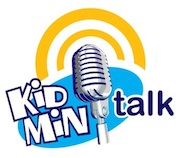• The Role of Inclusion
The Role of Inclusion
We believe that all are created equal and that all should be offered the benefits of salvation in the economy of God. Our relationship with Jesus extends to all. All are included, there is room for all, but it is also true, that not all will respond. However, those who do respond should not be marginalized. That means that all who respond can be included, regardless of gender, class, ethnicity, rank or status, rich or poor, even those which physical disabilities are included.
However, when we only respond to those who are like us, we, by this response, leave many in our society out. Therefore, they are candidates to be marginalized by our faith community and are not included, by default.
In considering the implications of this role of inclusion, it might be argued that it would be easy to ignore or not make any provision in our ministries for children who might be left out of our relational program. Often, I think we wait for marginalized children to come to us, then we since some need to create a program for them. However, what if we planned to include some by design? It just might upset the apple cart of the most comfortable among us.
The “homogeneous unit” principle states that we tend to attract people to our fellowship who are the most like us. This is the role of inclusion, but by this concentration some are omitted and are therefore candidates for being marginalized, or left out, if you please.
But when we read about the ministry of Jesus we observe just how He included the marginalized in His day—rich, poor, prostitute, centurion, tax collector, paralytic, blind, deaf, demon possessed, Samaritans, other Gentiles. All of these might be considered marginalized from the Jewish community in that day.
Here are a few possible categories of marginalized children that might be candidates for inclusion in your ministry.
1. Special needs children
These kids might be either physically or educationally handicapped. Some might have symptoms of ADHD or ADD, and may need special attentions of one-on-one teachers or special groups, if they cannot be mainstreamed into our programs. You may need one-on-one teacher support to incorporate this kind of kid.
2. Children of single or divorced parents. These children might be raised with the court decision of joint custody and therefore may only be available for your ministry on alternate weekends. What help can you offer these children and parents. What is the role of inclusion for kids like this in your ministry?
3. Children being raised by a grandparent, or guardian—other than the biological parent. What could you possibly do to assist this type child-care provider who grapples with this extra responsibility? Do you have anything that renders special assistance? What resources do you provide that helps to include these kids?
4. Children who come from economically disadvantaged homes. These might be your inner city or project kids. The pressure on this child could be intense. Have you realized some intentional ways of assistance for these needy kids who are attracted to your ministry? What kind of advocacy are you rendering?
5. Handicapped and/or wheelchair children Newer church buildings are required to make their facilities accessible for the handicapped and those in wheelchairs. However, older buildings must be renovated to make them accessible. We could keep these kids marginalized and not included by this absence. What is your plan to include them?
6. “Waiting” children These are special needs children waiting to be adopted. These “waiting kids,” might just show up in your program because their foster-care parents bring them. Is there a spot for them?
There are many more categories to suggest here, but felt-need programming requires that you are responsive to the needs that walk in the door. Having a plan to include these marginalized children is the issue here. Having a heart and a plan for them is what inclusion is all about.







2 Responses to “• The Role of Inclusion”
August 10th, 2011 at 4:11 pm
There are many more categories to suggest here, like you said.
One of which might be:
Children coming from GLBT Parent Homes. Where a child shares with another child in the ministry that he/she has two Mommies or two Daddies instead of a Mommy and a Daddy.
August 10th, 2011 at 7:09 pm
Well said, yes there are many more categories. I left some off as I desire to continue the dialogue with what my students are actually doing with this idea of inclusion. It is a difficult issue for some.
Leave a Comment